Abstract
A review of mass media response to the smoking issue over the past 25 years reveals that sustained involvement of the broadcast and print media has served significantly to heighten public awareness and reduce smoking rates in the total U.S. population. Public service advertising has been an integral part of the smoking control movement from its outset, but today's intensely competitive media environment has forced health promoters to look beyond public service announcements in the development of total communication programs. Media advocacy--using the media to sharpen public awareness and mold public policy to serve the public interest, a technique derived from political campaigns--is emerging as a powerful tool in the smoking control movement. Its emphasis is on changing the entire social context of tobacco use in America, rather than the smoking behavior of people. Because media advocates' success pivots on their access to the media, they must be able both to create news and to react quickly to breaking news and unexpected events. The opportunistic, risk-taking nature of media advocacy requires that most efforts be waged at the State and local levels. An increasing number of State health departments and other organizations are using paid advertising to improve the frequency and reach of nonsmoking messages. Research verifies that paid media campaigns increase the target audience's exposure to smoking control messages, but planning and making efficient media purchases require sophistication and, of course, the necessary funds. Irrefutable medical evidence linking smoking to disease and addiction, combined with the powerful social force of the nonsmokers' rights movement, offer hope that a smoke-free society is an achievable goal.(ABSTRACT TRUNCATED AT 250 WORDS)
Full text
PDF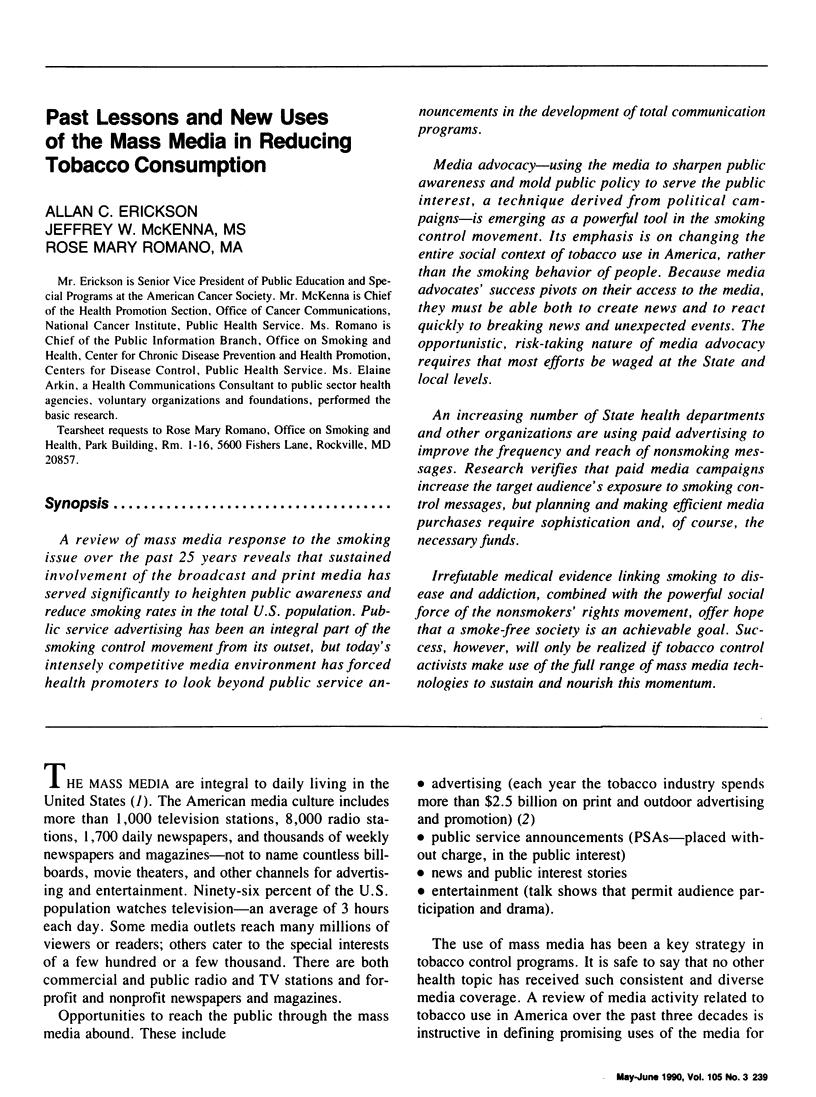
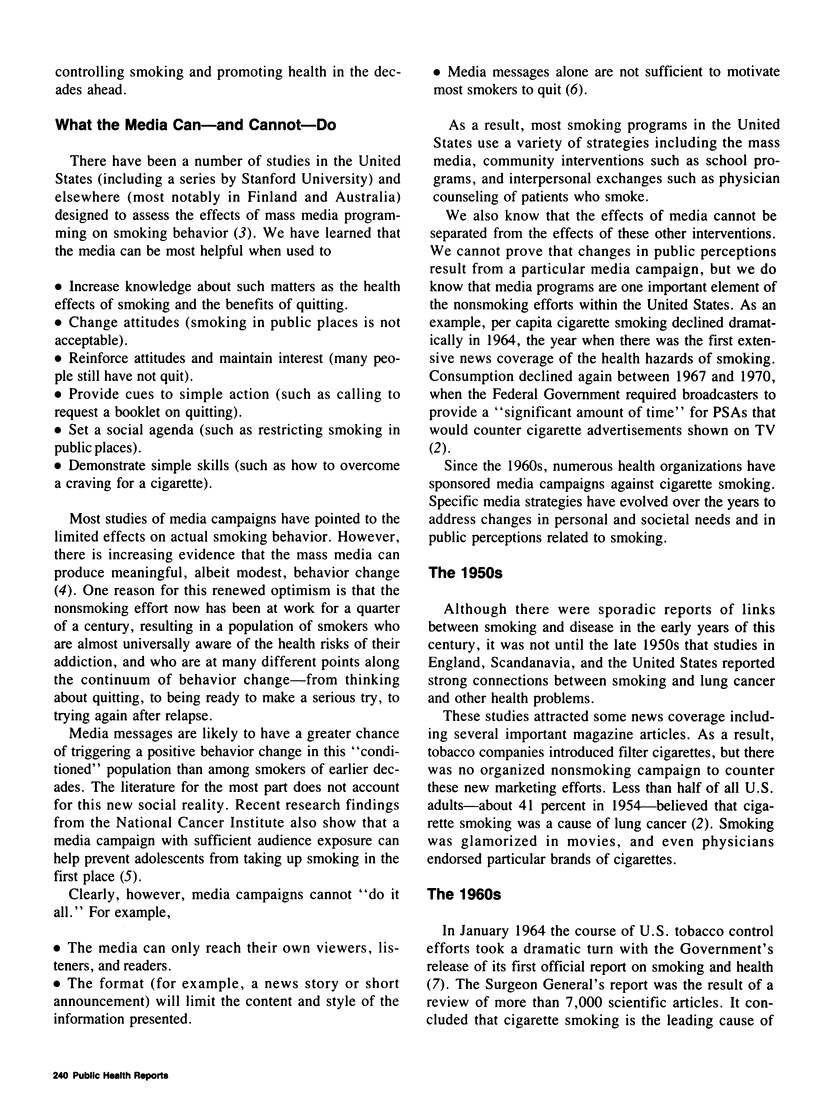
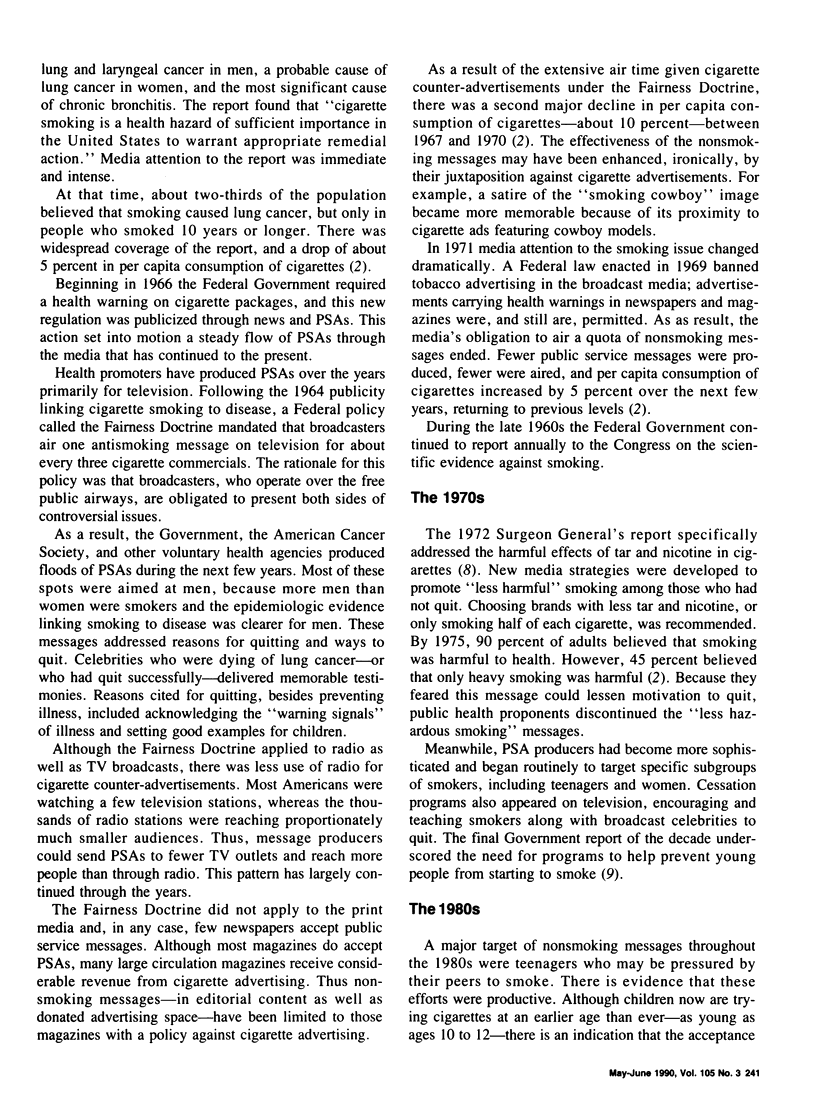
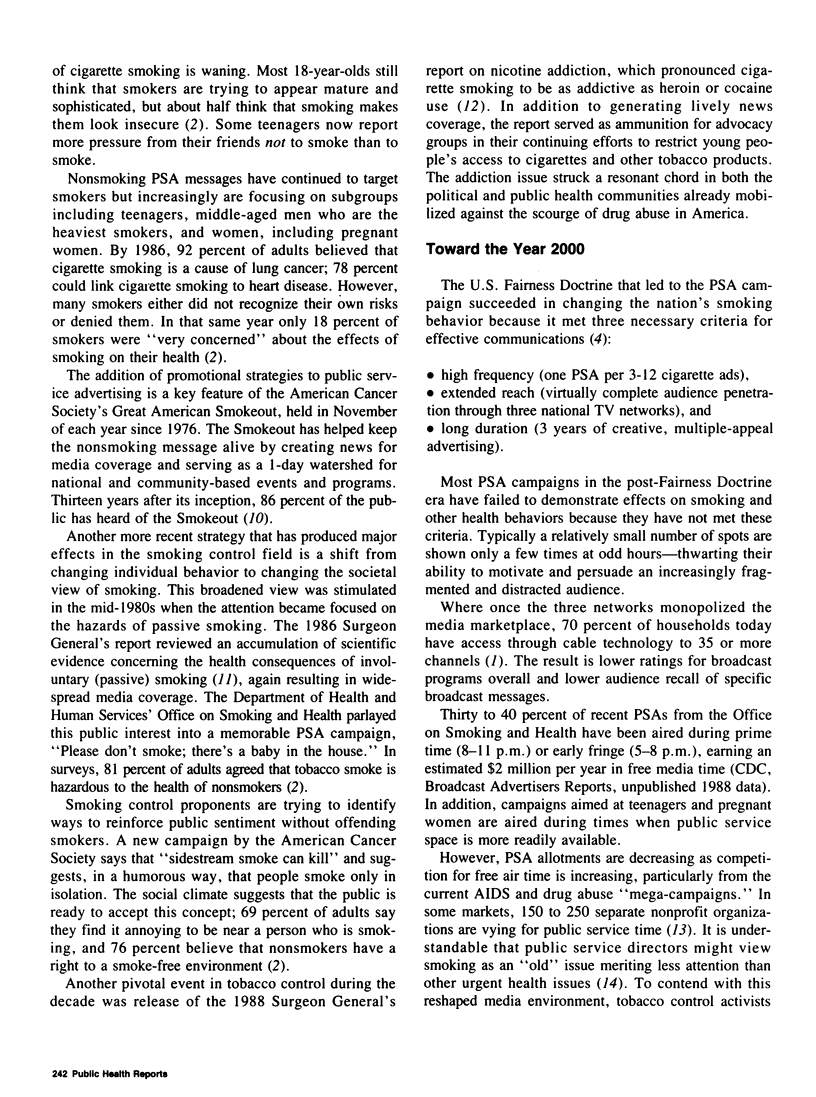
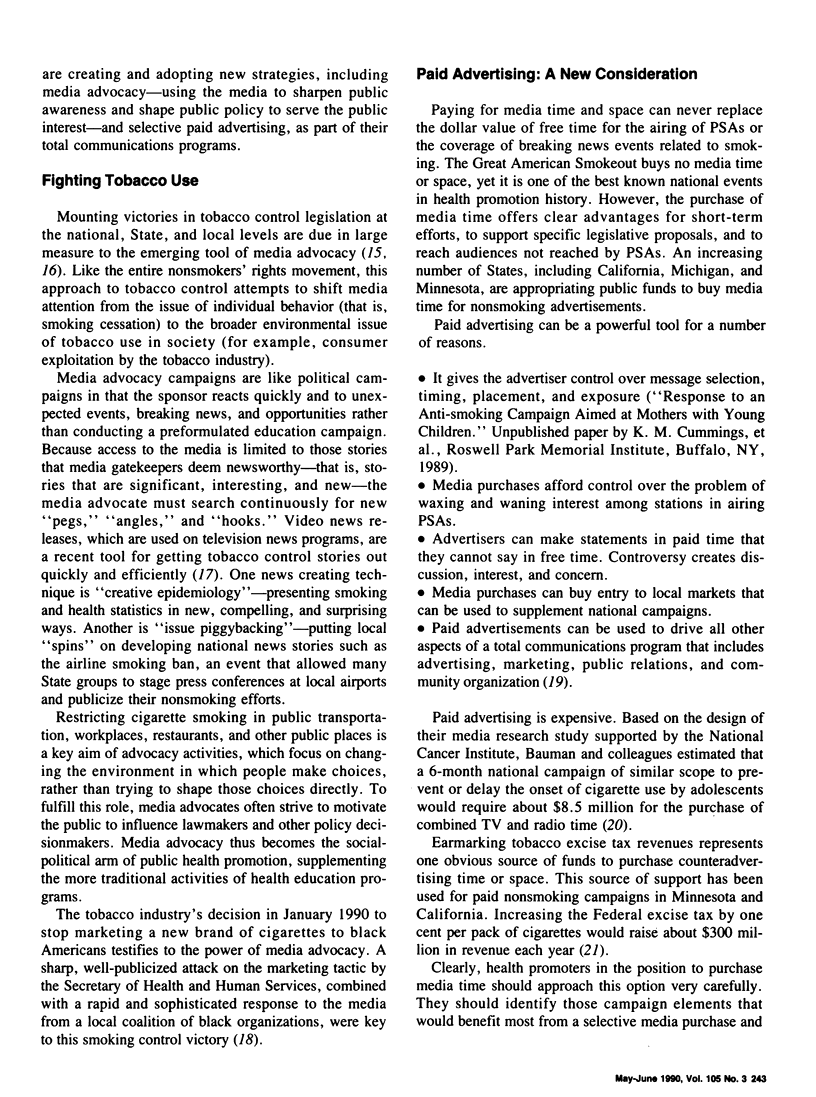
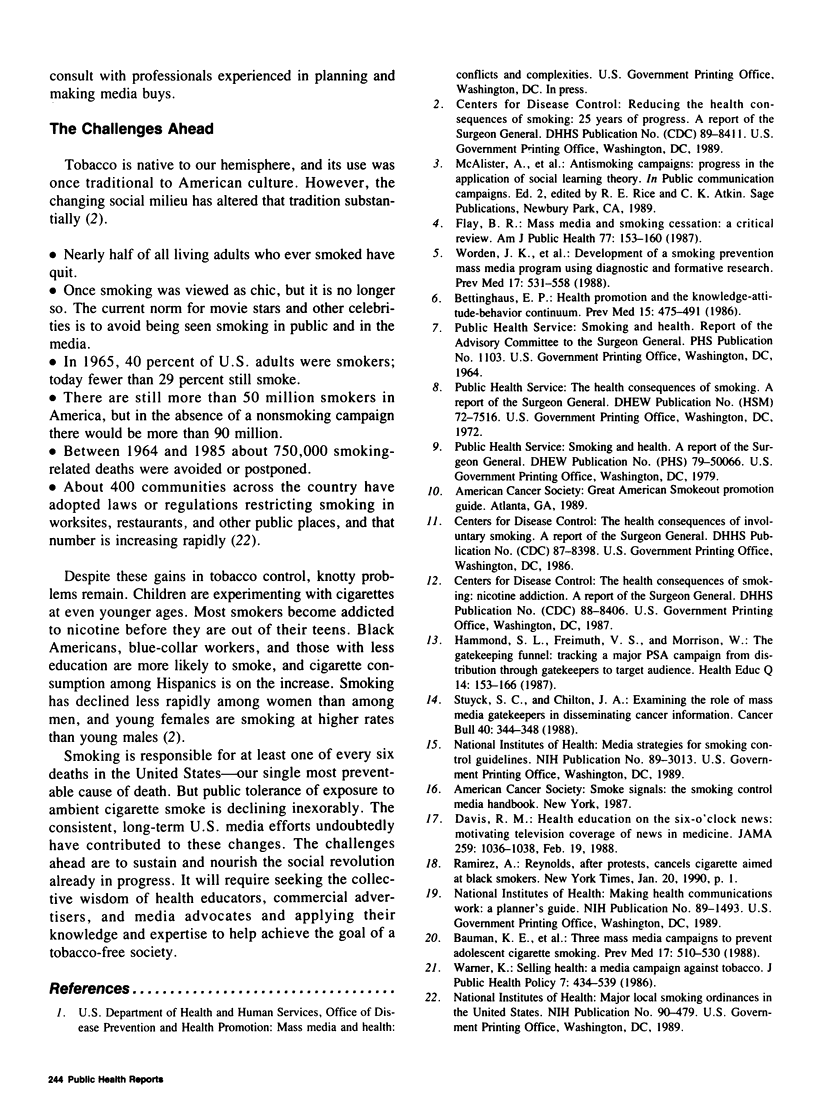
Selected References
These references are in PubMed. This may not be the complete list of references from this article.
- Bauman K. E., Brown J. D., Bryan E. S., Fisher L. A., Padgett C. A., Sweeney J. M. Three mass media campaigns to prevent adolescent cigarette smoking. Prev Med. 1988 Sep;17(5):510–530. doi: 10.1016/0091-7435(88)90050-3. [DOI] [PubMed] [Google Scholar]
- Bettinghaus E. P. Health promotion and the knowledge-attitude-behavior continuum. Prev Med. 1986 Sep;15(5):475–491. doi: 10.1016/0091-7435(86)90025-3. [DOI] [PubMed] [Google Scholar]
- Davis R. M. Health education on the six-o'clock news. Motivating television coverage of news in medicine. JAMA. 1988 Feb 19;259(7):1036–1038. [PubMed] [Google Scholar]
- Flay B. R. Mass media and smoking cessation: a critical review. Am J Public Health. 1987 Feb;77(2):153–160. doi: 10.2105/ajph.77.2.153. [DOI] [PMC free article] [PubMed] [Google Scholar]
- Hammond S. L., Freimuth V. S., Morrison W. The gatekeeping funnel: tracking a major PSA campaign from distribution through gatekeepers to target audience. Health Educ Q. 1987 Summer;14(2):153–166. doi: 10.1177/109019818701400203. [DOI] [PubMed] [Google Scholar]
- Warner K. E. Selling health: a media campaign against tobacco. J Public Health Policy. 1986 Winter;7(4):434–439. [PubMed] [Google Scholar]
- Worden J. K., Flynn B. S., Geller B. M., Chen M., Shelton L. G., Secker-Walker R. H., Solomon D. S., Solomon L. J., Couchey S., Costanza M. C. Development of a smoking prevention mass media program using diagnostic and formative research. Prev Med. 1988 Sep;17(5):531–558. doi: 10.1016/0091-7435(88)90051-5. [DOI] [PubMed] [Google Scholar]


